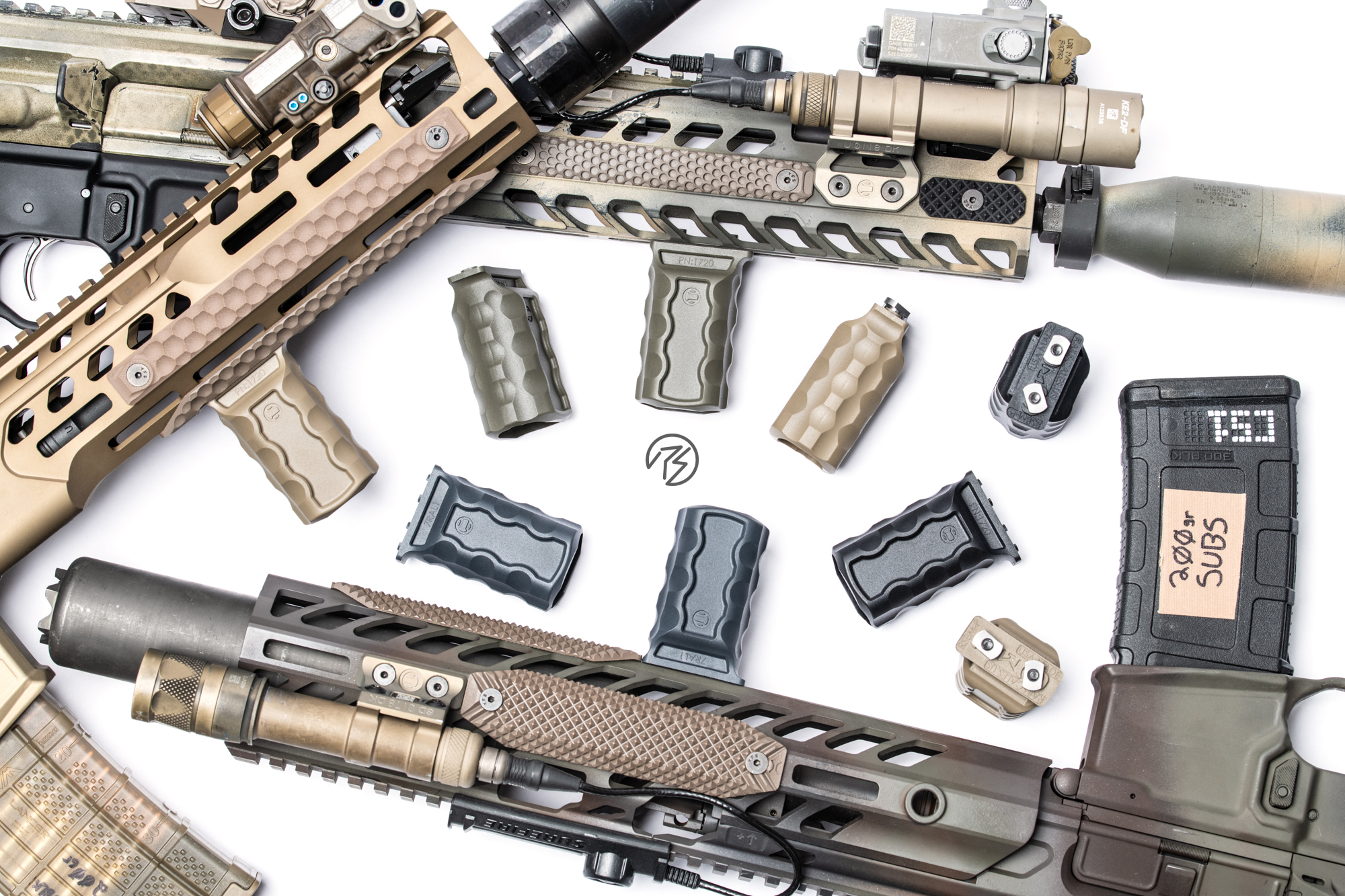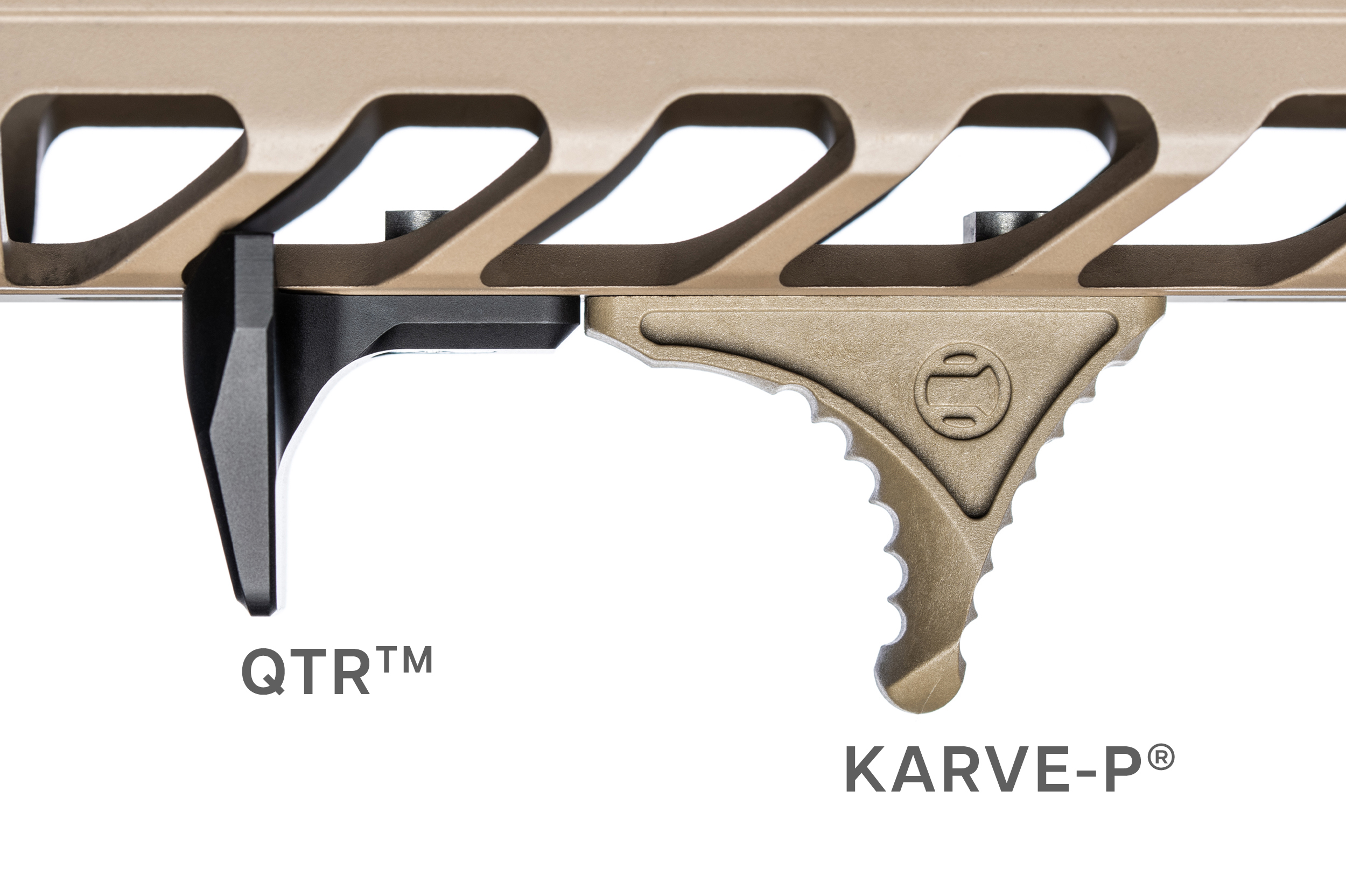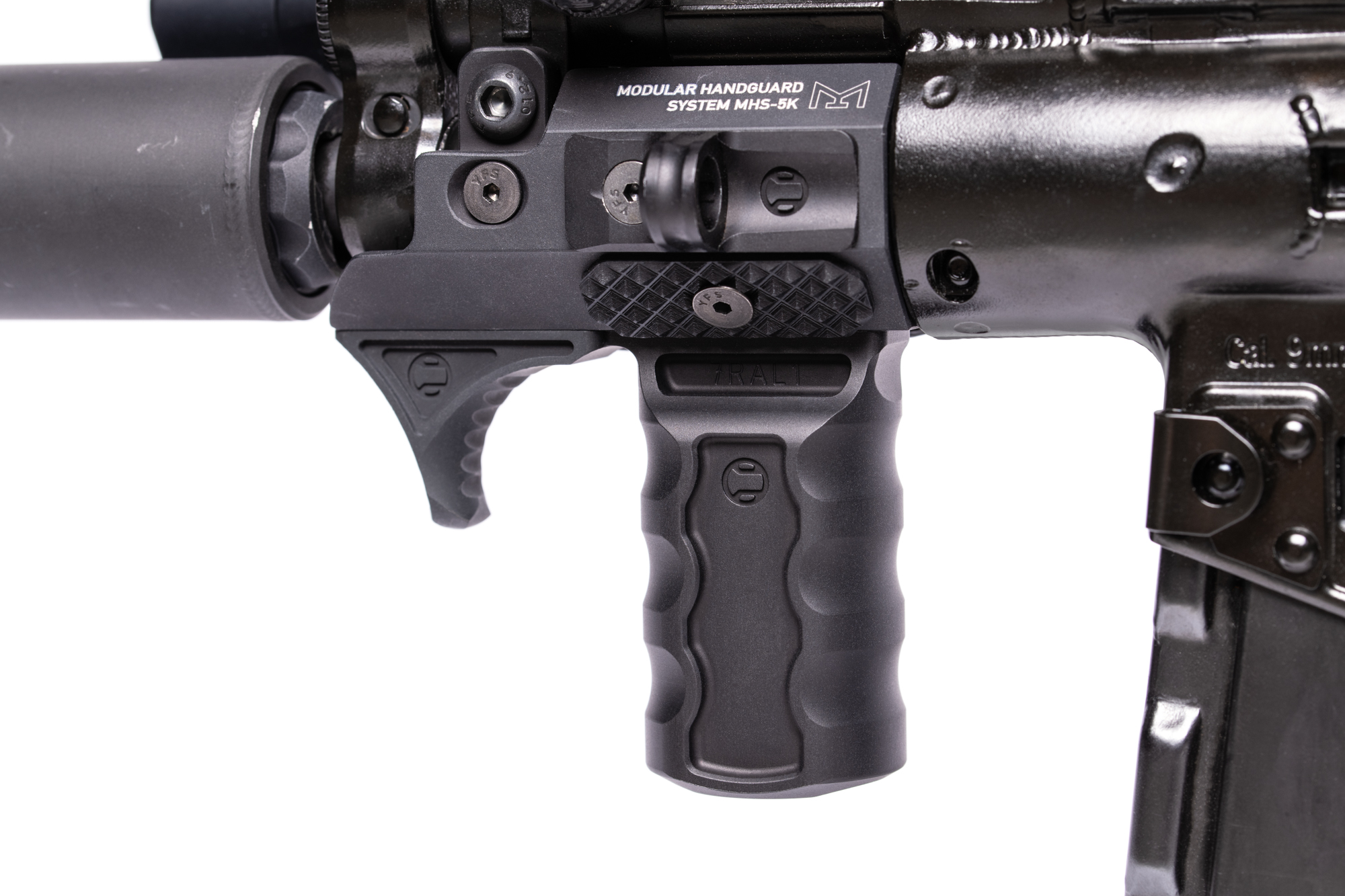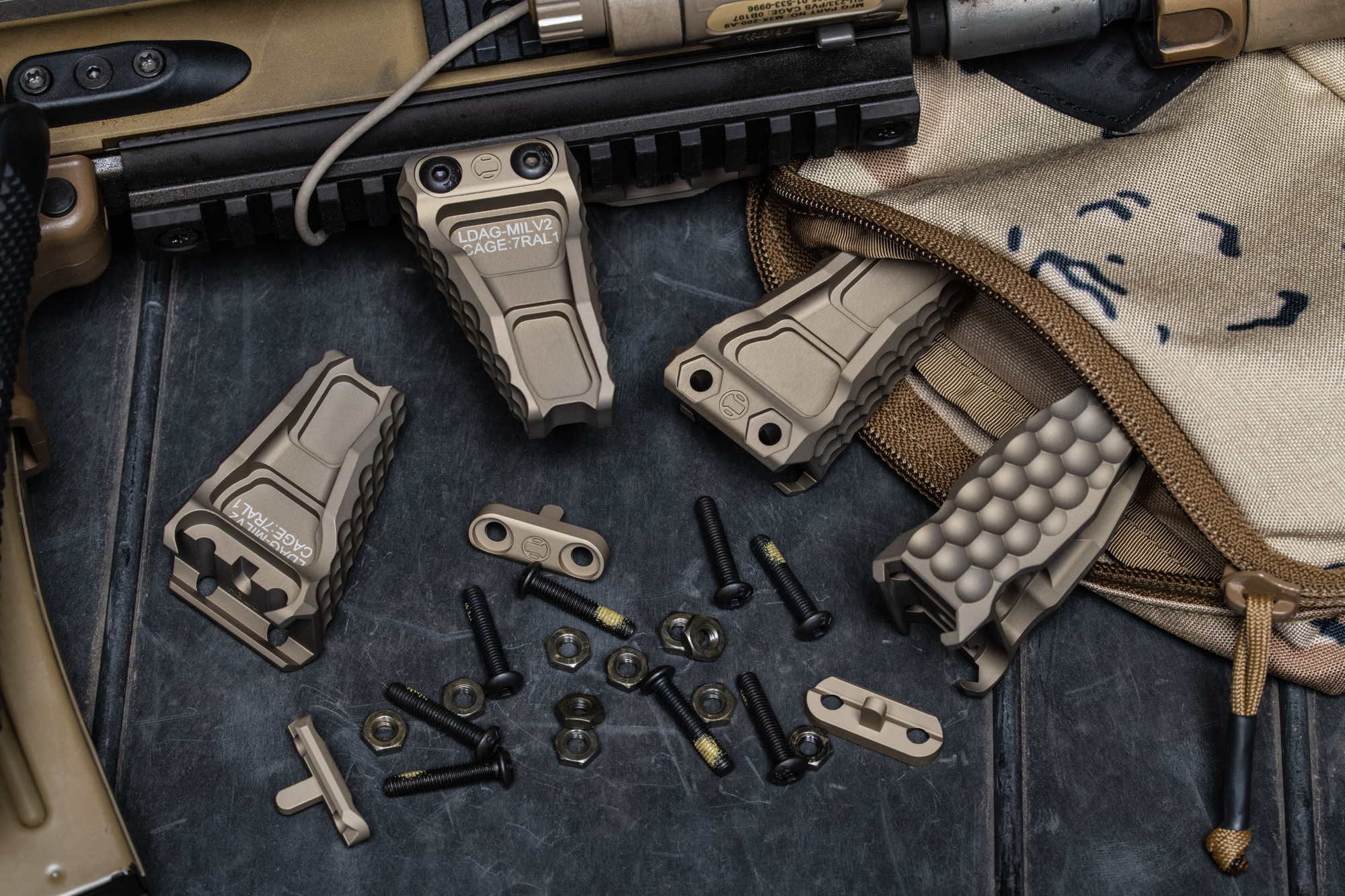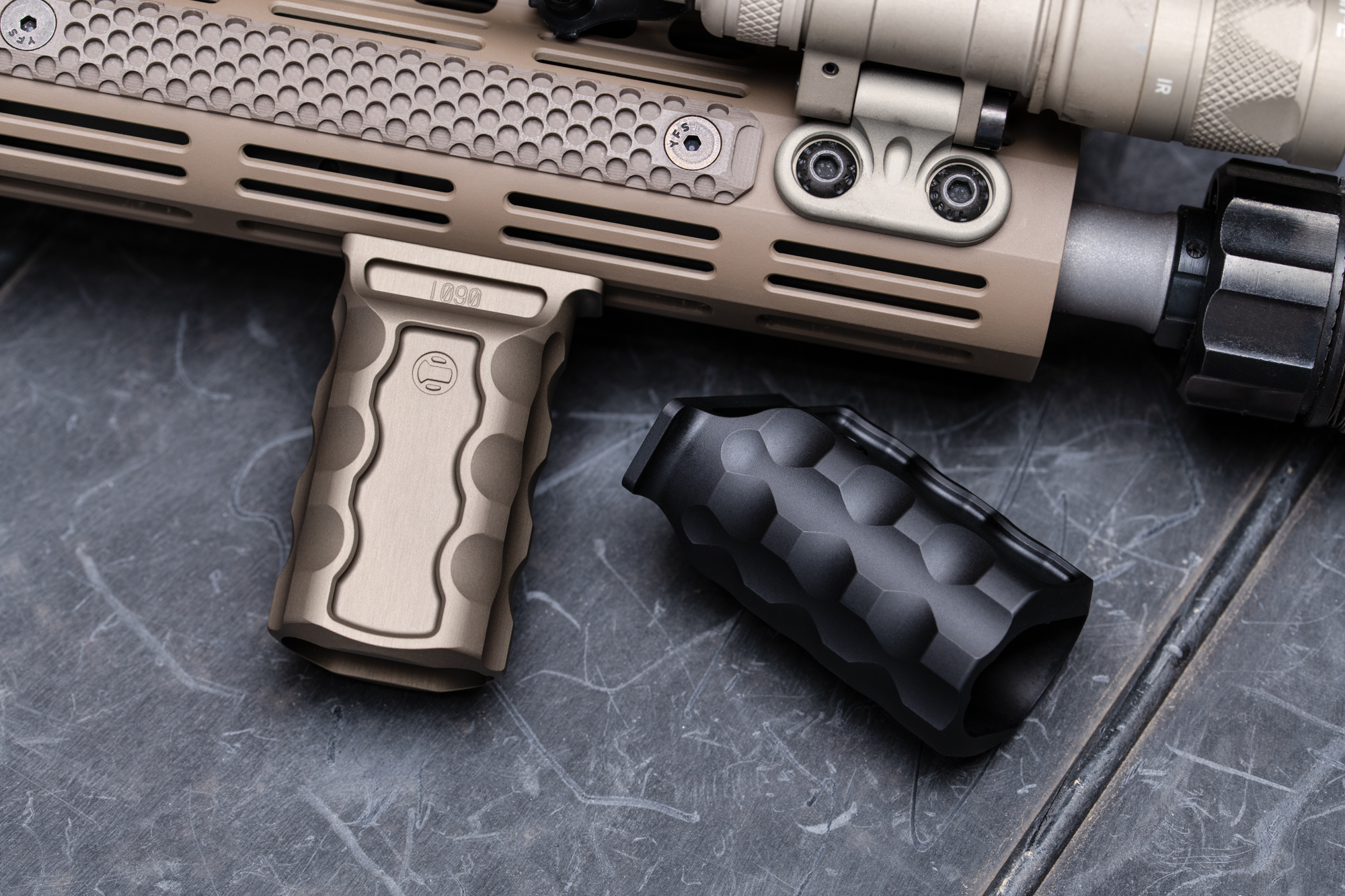We’ve talked a lot in previous blogs about ways to choose the best AR accessories, as well as questions to answer before hunting down new parts for your upper. In essence, the question of “best” is a very fluid one since everyone has different needs and preferences when it comes to their AR. But now, it’s time to get a bit more specific. It may be because we make a variety of different handstops and grips, each with their own specific functional uses, but the RailScales team frequently gets the question, “Which is better?” in regard to the ongoing grip or handstop debate. There are pros and cons to each, so let’s break it down.
Handstops vs Forward Grips - Overview
The Basics First, a brief explanation for those of you who may be new to the AR community. Both handstops and grips are accessories that can be attached to the forward end of your AR’s barrel by way of a rail system. They aren’t, by any means, a mandatory part of AR-15 ownership, but many owners find them a useful way to get a secure grip on the forend and have a more sturdy stance overall. The difference between a handstop and a grip breaks down to a question of size and grip.
Handstops
A handstop is a small accessory, usually no more than an inch or two long, that is intended to jut down from the bottom of your rail near the end of the barrel. With a hand stop, you’ll still grip around the rail in the same way you would with no grip assistant. The hand stop is there to do two things: it is there as a sensory guide so your hand can find the right grip distance without a lot of fiddling, and it is intended to be a point of resistance so you can tug your hand back more easily and get a more stable grip. Alternatively, with options like the RailScales Karve or Karve-P handstop, it's designed to be reversible so that it can be placed at the end of the rail and used in a "push" configuration to prevent the hand from going in front of the muzzle and creating a stable grip.
Vertical Forward Grips
In essence, a grip performs a similar purpose to a hand stop. It will attach in about the same place on your rails, and it’s made to help your forward hand get a better grip. The big difference is that a grip is longer, generally somewhere in the range of 2 to 5 inches. Where a handstop is there for your hand to just rest against, a grip is there for your hand to, well, grip. It will jut down with enough length that you can actually wrap your hand around it and use that grip to pull your AR back into a secure stance. The new RSBM-P from RailScales would be a great addition to a rifle due to its price and material makeup.
The RSBM-P is made from a glass-infused nylon material that the HTP line of scales uses, so quality is still top-notch from its aluminum family member. The RSBM-P is designed to give the shooter a comfortable space for their support hand and be good-looking enough to not have it look like piece of tubing sticking off of your firearm. If you are looking for a more angled approach to grip, look at the Anchor or LDAG. One for MLOK and Keymod and the other for Picatinny, with each giving you the same performance-enhancing design and great visual aesthetics.
Pros and Cons
There are an abundance of AR 15 accessory manufacturers out there, so odds are good you’ll be able to find an MLOK hand stop—and the same goes for grips, of course. The upside to both hand stops and grips is that they have been shown to help improve accuracy and precision. They’re made to give you a sturdier grip, so as long as your chosen hand stop or grip is doing so, you will likely see some level of improvement in overall control. The primary differences between the two categories, as you’ve probably figured out, are the weight and the way each will cause you to adjust your grip on the forend. With handstops, your grip will still wrap directly to the rails near the front of the barrel and, depending on how much you’re firing in rapid succession and the material your rails are made from, heat can eventually become an issue. Of course, there are rails and RailScales panels that can help with that pretty easily. Because a grip will hang below the barrel, you’re less likely to feel any heat from firing too many rounds quickly. In turn, both the weight and the grip will affect your usage, at least somewhat.
Choose Vertical Grip or Handstop
Handstops will pretty much always be lighter than grips, just by dint of size, so if weight is your big concern, a handstop will be the lightest option. A grip, on the other hand, will come in a range of different weight options. A heavier grip may be more sturdy and durable, but that has the potential to affect the overall weight distribution of your AR, so you’ll want to pay attention to the weight and the material when choosing a grip. Your preference for handstop or grip may also depend on your primary usage. A hunter may prefer a small handstop while a competition shooter may want the added stability of a vertical grip. Here at RailScales, we pride ourselves on making the best AR accessories based on our knowledge of AR owners’ needs. Whether you prefer a grip or a handstop, shop our specially designed and manufactured control options online and experience the difference for yourself!


